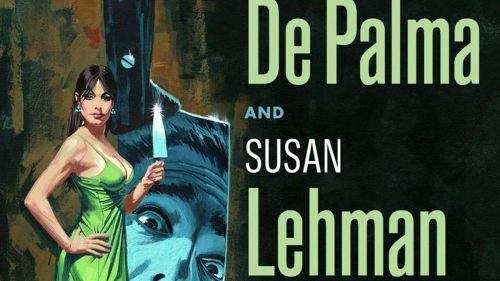SISTERS, DEAD RINGERS And Uncanny Existential Terror
Brian De Palma's Sisters and David Cronenberg's Dead Ringers could essentially exist as companion pieces. Both are surreal, disquieting stories of exceedingly co-dependent twins driven to madness. But where Cronenberg's story of gynecologist twins Beverly and Elliot Mantle is more tonally and atmospherically subdued with existential dread, the tone of De Palma's film is stylistically and tonally bipolar, mirroring the opposing halves of previously conjoined twins Dominique and Danielle Blanchion.
Margot Kidder is perfectly cast as both Dominique and Danielle - the former a feral, unhinged, and ferocious sibling who proves territorial and possessive of her better half, the latter a demure and seemingly naive aspiring model/actress. Via a nosy journalist neighbor who witnesses Dominique's brutal murder of the man who spent the night with Danielle, we learn that not only does Danielle have a sister, but that the two were previously conjoined. With the aid of Bernard Herrmann's eerie, suspenseful score, Sisters becomes a cerebral procedural, as the journalist pushes further and further into dangerously enigmatic territory, essentially puncturing Danielle's psyche - it becomes increasingly evident that it was already too fragile.
Putting aside the wackiness of spilt birthday cakes and a final, hilariously non-sensical scene, De Palma's Sisters offers an eerie and effective exploration of the concept of co-dependence both innate and psychologically manufactured. When Danielle and Dominique are dis-joined, neither feels as though she can exist without the other, and although the plot "twist" is predictable in the context of contemporary cinematic tropes, the basic idea still resonates effectively.
Cronenberg's Dead Ringers examined an existential idea of the individual as two halves, translated into a literal representation of identical, inseparable twins, each the same on a superficial and molecular level, but both carrying different personality traits. Beverly and Elliot yearn to be - and often feel as though they are, or should be - one, and each feels adrift and incomplete without the other. They trade sex partners in an effort to form a more perfect union, to reinforce the idea that they are one and that their experiences are entirely shared and singular.
De Palma's Sisters explores a similar existential crises, almost in reverse: when the whole is divided into two halves, can either survive without the other? And what meaning does each life have without that mutual existence? We typically define ourselves in fractions - there is our good side and our bad side, the friendly and the introverted, the reasonable and the obstinate, the rational and the irrational, the sane and insane. That's a more reductive view than the complex reality, which is that we often "mix and match" pieces of our selves to show different sides to various people; we are never exactly the same person to our friends as we are to our families or romantic interests or the clerk at the gas station. We are innately dishonest in a way that is both predictable and typically non-threatening.
But De Palma and Cronenberg are not interested in this multi-faceted complexity; both directors explore a simplified psychology of outward co-dependency to examine a more cerebral, inner co-dependency in basic terms: 1 + 1 = 2. Beverly and Elliot and Dominique and Danielle cannot live without their other halves, and the loss of an intimate dynamic created in the womb and cemented when they took their first breath side by side is a mortal threat.
Sisters and Dead Ringers exist as almost inverse or bizarro narratives, like looking at a pair of identical twins and perceiving their uncanny qualities. De Palma's film is a wonderfully weird exploration of the psychosis induced when one twin is taken from the other, when one half is removed from the whole, while Cronenberg's film uses dreadful, near-surgical precision to ponder individuality in duality and vice versa. Each film presents the dual self in literal terms, offering a horrific existential dilemma, a Jungian nightmare in which the compartmentalization of the individual is fully, objectively realized in a mirror self.
The potential shattering of that mirror drives the Mantle twins to suicide, as one cannot possibly live without the other. Danielle Blanchion suffers a post-separation psychosis in which she believes her sister is still alive, a sort of dissociative state wherein a split personality is created out of necessity to cope with a balance that has been perceptibly removed. In the end, De Palma's film establishes that one can physically live without the other, that the other half can be psychologically assimilated to maintain a familiar reality. The story of the Mantle twins is undoubtedly tragic, and the Blanchion twins offer a supplementary case study - a deranged justification for that tragedy.



